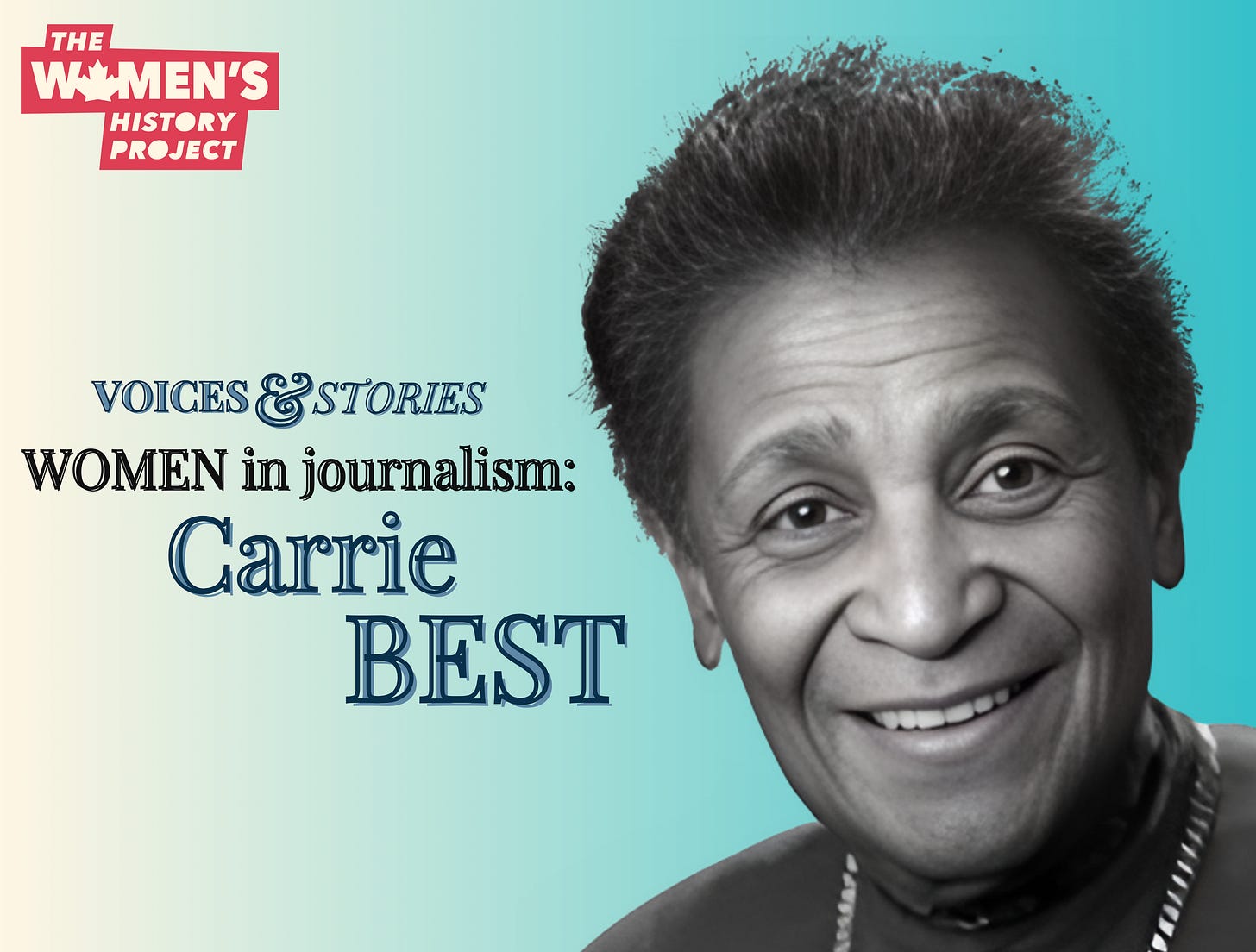Carrie Best (1903-2001)
Growing up in Nova Scotia, Carrie’s childhood was marked by the experience of deep-seated racial discrimination. Despite this difficult environment, her parents encouraged her education and pride in her heritage. As a teenager, Carrie was already writing, often submitting opinion letters to the local newspapers. She felt strongly about the racist attitudes and restrictions that permeated society and limited her options in life; she was rejected from being able to become a nurse due to her race, and she refused to become a teacher in a segregated school.
In 1941, at thirty-eight years old, Carrie heard about an incident that started her on her path to becoming a prominent civil rights activist. At the Roseland Theatre in New Glasgow, Nova Scotia, several Black teenage girls had been forcibly removed from the cinema after sitting in a ‘white only’ section. Hearing this, Carrie took her son to the Theatre – where she promptly walked into the main floor and refused to leave, even when the police were called, and she was charged with disturbing the peace. As she had planned, Carrie could now sue the Theatre, so she filed a civil lawsuit for racial discrimination, damages for assault and battery and breach of contract. The case failed in 1942 – the right to exclusion was upheld and Carrie was ordered to pay the costs.
In response to this – and determined to have the issues of segregation discussed in the public sphere – Carrie decided to start a newspaper. The Clarion was started in 1946, a joint project between Carrie and her son, making it one of the first Nova Scotia newspapers owned and published by Black Canadians. The Clarion reported on a range of events from sports to social activities, and gradually placed more emphasis on racism and advocating for equal rights. By 1956 it was being nationally circulated.
When businesswoman Viola Desmond was publicly and aggressively forced out of the same Roseland Theatre in 1946, Carrie tirelessly supported her, printing her story in detail at every stage of the trail in The Clarion, and raising money to support her court case.
Carrie moved into radio broadcasting in 1952 with her program The Quiet Corner, where she shared poetry, classical music, and religious tunes to listeners across the Maritimes. Carrie continued this work for twelve years; in 1968, she became a weekly columnist writing about human rights, which ran until 1975. Carrie championed Aboriginal rights and issues facing the Black community, publishing extensive reports about discrimination and inequality. She also founded the Kay Livingstone Visible Minority Women’s Society to help support funding for education, and by age 74, she had written her autobiography. She was awarded both before and after her death in 2001, for her incredible contributions as a civil rights and human rights advocate.
We hope you enjoyed this short profile on Carrie Best! For more information on her and other trailblazers, check out The Canadian Encyclopedia online, Historica Heritage Minutes and the Women of Impact Gallery.
Do you have a Canadian heroine you’d like to see featured in Voices & Stories? Have any suggestions for us? Don’t hesitate to leave a comment or a direct message on our Substack (or at any of our socials!).
You can also get in touch by email at communications@womenshistoryproject.ca





I am so enjoying reading/watching your histories. Thank you.